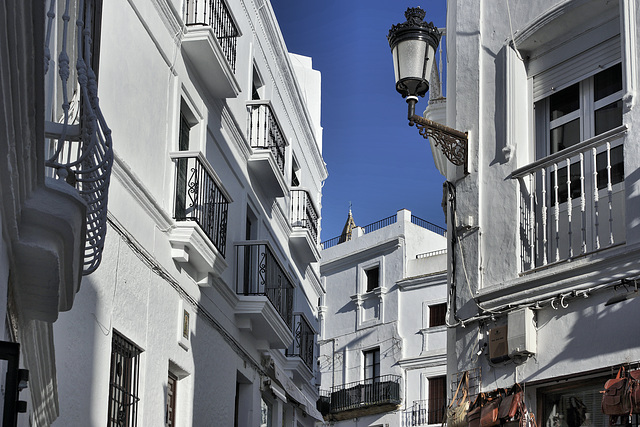La Isla Boutique – Vejer de la Frontera, Cádiz Pro…
Puerta de la Segur – Vejer de la Frontera, Cádiz P…
Divino Salvador Parish Church, Take #1 – Vejer de…
Divino Salvador Parish Church, Take #2 – Vejer de…
Divino Salvador Parish Church, Take #3 – Vejer de…
Passionate Tiles – Calle Nuestra Señora de la Oliv…
Virgen de la Oliva – Calle Nuestra Señora de la Ol…
Forever Grateful – Calle Marqués de Tamarón, Vejer…
Fishy Handicrafts – Calle José Castrillón, Vejer d…
Winding Way – Vejer de la Frontera, Cádiz Province…
Pavement Stones, Take #1 – Calle Badillo, Vejer de…
Pavement Stones, Take #2 – Calle Judería, Vejer de…
Pavement Stones, Take #3 – Calle Judería, Vejer de…
Clock Tower, Divino Salvador Parish Church – Vejer…
Bell Tower, Divino Salvador Parish Church – Vejer…
Portal – Divino Salvador Parish Church, Vejer de l…
Stained Glass Alcove – Caille de la Judería, Vejer…
Arches – Caille de la Judería, Vejer de la Fronter…
Caille de la Judería – Vejer de la Frontera, Cádi…
Puerta Cerrada, Take #1 – Caille de la Judería, Ve…
Puerta Cerrada, Take #2 – Caille de la Judería, Ve…
Blue Door – Caille de la Judería, Vejer de la Fron…
Calle Castillo – Vejer de la Frontera, Cádiz Provi…
By the Side of the Road – Near Hotel Sindhura, Vej…
Red Poppy – Near Hotel Sindhura, Vejer de la Front…
Thatch – Adjacent to Hotel Sindhura, Vejer de la F…
Wrought Iron Monogram – Hotel Sindhura, Vejer de l…
Patio Fountain – Hotel Sindhura, Vejer de la Front…
Ceramic Steps – Hotel Sindhura, Vejer de la Fronte…
Horseless Buggy – Hacienda Montenmedio, Montenmedi…
Accidental Sculpture – Fundación NMAC, Vejer de la…
Bath Tiles – Fundación NMAC, Vejer de la Frontera,…
Bath Towels – Fundación NMAC, Vejer de la Frontera…
"Hammam" – Fundación NMAC, Vejer de la Frontera, C…
"The Innocence of Animals" – Fundación NMAC, Vejer…
"The trip, Habibi" – Fundación NMAC, Vejer de la F…
"Pact of Madrid" – Fundación NMAC, Vejer de la Fro…
"Second Wind," Take #6 – Fundación NMAC, Vejer de…
"Second Wind," Take #5 – Fundación NMAC, Vejer de…
"Second Wind," Take #4 – Fundación NMAC, Vejer de…
"Second Wind," Take #3 – Fundación NMAC, Vejer de…
"Second Wind," Take #2 – Fundación NMAC, Vejer de…
"Second Wind, Take #1," – Fundación NMAC, Vejer de…
"Puente," Take #2 – Fundación NMAC, Vejer de la Fr…
"Puente," Take #1 – Fundación NMAC, Vejer de la Fr…
Location
Lat, Lng:
You can copy the above to your favourite mapping app.
Address: unknown
You can copy the above to your favourite mapping app.
Address: unknown
Keywords
Authorizations, license
-
Visible by: Everyone -
All rights reserved
-
186 visits
Pueblo Blanco – Vejer de la Frontera, Cádiz Province, Andalucía, Spain


Perched high on a hill and gleaming white under the intense Andalusian sun, you can see Vejer de la Frontera long before you make the journey up the winding road to enter the town proper. If the town makes an impression from afar, once you’re inside the narrow medina-like streets it becomes overwhelmingly atmospheric. The old part of Vejer is one of the most picturesque places I’ve visited. The winding lanes and alleyways, the whitewashed houses, ruined fort and ancient church are the stuff of historic novels, and Vejer has had an extraordinarily long history. Like nearby Cadiz, it was first a Phoenician town, then came the Carthaginians, followed by the Romans. The town was then ruled by the Visigoths until the arrival of the Moors.
In 712 the Battle of Guadalete took place to the north of Vejer. It was a defining moment in the Moorish conquest of Spain. The ruling Visigoth armies led by King Roderic, were defeated by an Arab and Berber army. Roderic was killed along with many Visigoth nobles, leaving a power vacuum that allowed the Moors to attack and capture the Visigoth capital of Toledo. Vejer would be ruled by the Moors for the next 536 years. It wasn’t until 1248 that the city fell to the Christian armies of Ferdinand III of Castile, after which it was a border town and fortress along the frontier with the parts of Spain that remained in Moorish hands. This is when it received the addition of ‘de la Frontera’ to its name. Even after the collapse of Moorish power, the town continued to be attacked by Barbary pirates – it’s close to the coast and was an easy target for Berber corsairs from the coast of North Africa.
In 712 the Battle of Guadalete took place to the north of Vejer. It was a defining moment in the Moorish conquest of Spain. The ruling Visigoth armies led by King Roderic, were defeated by an Arab and Berber army. Roderic was killed along with many Visigoth nobles, leaving a power vacuum that allowed the Moors to attack and capture the Visigoth capital of Toledo. Vejer would be ruled by the Moors for the next 536 years. It wasn’t until 1248 that the city fell to the Christian armies of Ferdinand III of Castile, after which it was a border town and fortress along the frontier with the parts of Spain that remained in Moorish hands. This is when it received the addition of ‘de la Frontera’ to its name. Even after the collapse of Moorish power, the town continued to be attacked by Barbary pirates – it’s close to the coast and was an easy target for Berber corsairs from the coast of North Africa.
- Keyboard shortcuts:
Jump to top
RSS feed- Latest comments - Subscribe to the comment feeds of this photo
- ipernity © 2007-2025
- Help & Contact
|
Club news
|
About ipernity
|
History |
ipernity Club & Prices |
Guide of good conduct
Donate | Group guidelines | Privacy policy | Terms of use | Statutes | In memoria -
Facebook
Twitter

Sign-in to write a comment.